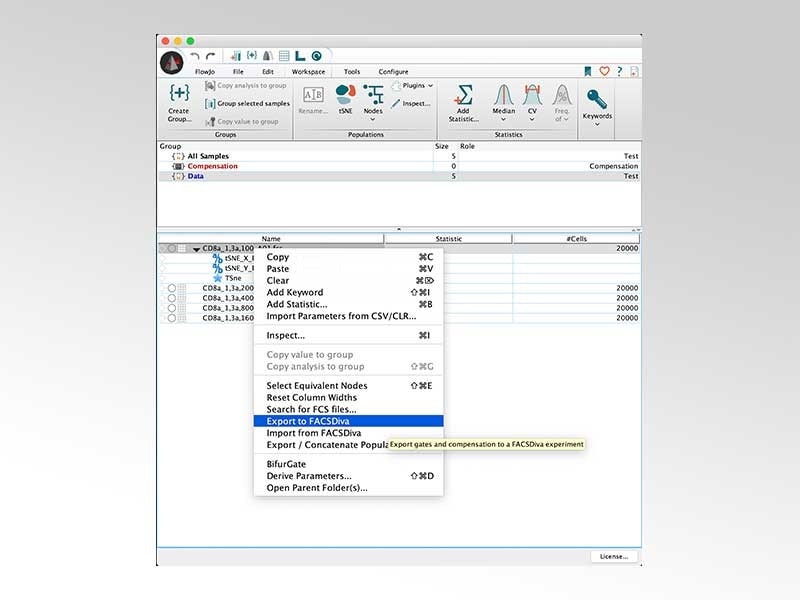
Ticking this option may help workspaces with a large number of boolean populations calculate gating trees faster, but it may also use more system memory when performing the calculations. Selecting this option saves information about boolean gates in memory so that FlowJo does not have to recalculate them if those booleans are needed for subsequent calculations.

Pressing the “Show BDRC Cache” option will take users to the folder where the temporary files of a BDRC analysis are stored. This option is typically only used for trouble shooting. This option will prevent FlowJo from deleting its cache folder where it keeps samples and plugin analysis performed in an acs file. This allows the user to set the number of events that are initially displayed while FlowJo is trying to calculate all of the events in a plot. If 64GB or RAM is installed, set this value to 8000. If 32GB of RAM is installed, set this value to 4000. This is the number of request/response pairs that FlowJo keeps in memory so it does not have to do the work again.
#INSTALL FLOWJO FREE#
For faster computers / faster hard drives, feel free to increase this setting if increasing the number if engines does not help. This is how much data an Engine will read at each cycle. On a PC, the default value here is set to work for a computer with minimal installed RAM (default setting is 7372 mb), and can be adjusted accordingly if more RAM is installed. We suggest to set this to ~1/2 times the total RAM installed on the computer. If exceeded, some files get booted out of memory. This is the maximum amount of FCS data that can be stored in memory.

The default setting is (number of processors +1), you may wish to increase this number or launch more Engines (via the Dispatcher preference.) Most notable result of this preference will be in layout editor batching.įlowJo’s Engine handles all reading and writing of FCS data, and performs all calculations and manipulations of the data while in memory. We recommend the default setting, calculated by FlowJo based on your computer’s resources. This preference requires that the program is restarted in order to be updated. This integer tells FlowJo how many threads the Graphical User Interface should open at the start of the program. If you have experienced an “out of memory error,” please scroll down to “Memory Management,” below.

Select the Performance button in the Preferences tool to open the Performance preferences.


 0 kommentar(er)
0 kommentar(er)
